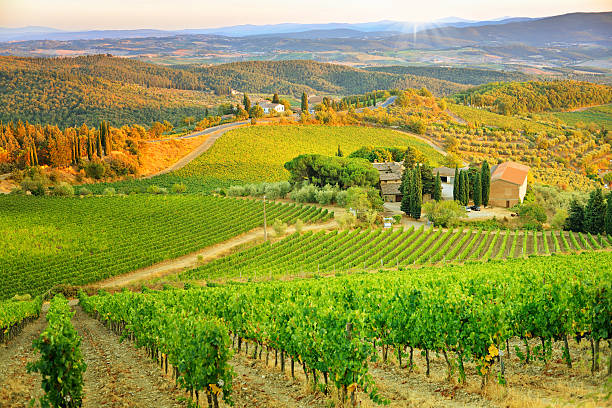Agrotourism, at its core, is a unique form of tourism that immerses visitors in the agricultural lifestyle. Unlike traditional tourism, which often focuses on urban attractions and cultural landmarks, agrotourism centres around rural experiences. It offers a chance for individuals and families to connect with the land, the farmers, and the local food production process.
In recent years, the significance of local food systems has gained widespread recognition. These systems emphasise the production and consumption of food that is grown and processed within a defined geographic area. They prioritise sustainability, reduce carbon footprints, and support local economies.
Local food systems offer a range of benefits, from fostering community resilience to ensuring food security. They promote the use of traditional, small-scale farming methods, which often have a lower environmental impact compared to large-scale industrial agriculture.
In this blog post, we will delve into the symbiotic relationship between agritourism and local food systems. We will uncover the various ways in which agrotourism acts as a catalyst for the growth and sustainability of these systems. By examining case studies, considering challenges, and envisioning future trends, we aim to shed light on the pivotal role that agrotourism plays in shaping our agricultural landscape.
The Concept of Agrotourism
A. Definition and Scope of Agrotourism
Agrotourism encompasses a wide range of activities and experiences that bridge the gap between urban dwellers and rural landscapes. It involves visiting farms, ranches, vineyards, and other agricultural settings to engage in activities such as picking fruits, milking cows, or even participating in workshops on traditional farming techniques. This hands-on approach allows tourists to gain a deeper appreciation for the complexities of food production.
B. Historical Background
The roots of agrotourism can be traced back to a time when communities relied on agrarian practices for sustenance. Early agrarian societies often hosted visitors to share knowledge and exchange cultural traditions. Over the years, as industrialization took hold, this practice dwindled. However, in recent decades, a resurgence of interest in sustainable agriculture and local food systems has reinvigorated the concept of agrotourism.
C. Types of Agritourism Activities
Agrotourism offers a diverse array of experiences tailored to cater to a wide range of interests. These activities can include:
1.Farm Tours and Workshops: Visitors get a firsthand look at the day-to-day operations of a farm, often participating in activities like planting, harvesting, or animal care.
2.Farm-to-Table Experiences: This involves dining on the farm, where the ingredients are sourced directly from the land. It provides a unique opportunity to taste the freshest produce.
3.Educational Programs: Workshops, seminars, and demonstrations that educate visitors about sustainable farming practices, biodiversity, and the importance of local food systems.
4.Farm Stays and Accommodations: Some farms offer lodging options, allowing guests to fully immerse themselves in the agricultural experience.
These diverse activities cater to a broad audience, from families seeking an educational vacation to food enthusiasts interested in tasting locally-produced delicacies.
Benefits of Agritourism for Local Food Systems
A. Economic Impact
1. Income Generation for Local Farmers
Agrotourism provides a significant source of supplementary income for local farmers. By opening their farms to tourists, farmers can diversify their revenue streams beyond traditional agricultural sales. This additional income not only supports the farmer and their family but also contributes to the overall economic vitality of the local community.
2. Job Creation in Rural Areas
Beyond direct income for farmers, agrotourism creates employment opportunities in rural regions. This can range from tour guides and hospitality staff to artisans producing handcrafted goods sold on the farm. By generating jobs, agrotourism helps combat rural unemployment and contributes to a more balanced regional economy.
B. Cultural Exchange and Education
1. Learning about Local Food Production
Agrotourism offers an invaluable educational experience for visitors. They have the chance to learn about the entire food production process, from seed to table. This firsthand knowledge fosters a deeper appreciation for the effort and care that goes into producing the food we consume.
2. Exposure to Traditional Farming Practices
Many agrotourism experiences showcase traditional and sustainable farming methods. This exposure helps preserve cultural heritage and encourages the adoption of eco-friendly practices in food production. It also promotes a greater understanding of the importance of local, seasonal, and organic foods.
C. Strengthening Food Security
1. Reduced Dependency on External Food Sources
Agrotourism encourages self-sufficiency by promoting local food production. When communities have the capacity to grow a significant portion of their own food, they become less reliant on external sources, reducing vulnerabilities associated with long supply chains.
2. Increased Availability of Fresh, Locally-produced Food
Through agrotourism, consumers have direct access to fresh, locally-grown produce. This not only means tastier and more nutritious meals but also contributes to reducing the carbon footprint associated with transporting food over long distances.
Challenges and Considerations
A. Balancing Tourism and Sustainable Farming Practices
One of the key challenges in agrotourism is finding the delicate balance between catering to tourists’ desires for unique experiences and maintaining sustainable farming practices. Farms must ensure that the influx of visitors doesn’t compromise the integrity of their operations or harm the environment. Thoughtful planning and management are crucial to strike this equilibrium.
B. Infrastructure and Accessibility
For agrotourism to thrive, farms often need to invest in infrastructure to accommodate visitors. This may include facilities for guided tours, visitor centres, or even lodging options. Additionally, ensuring accessibility, especially for individuals with disabilities, is an important consideration. These investments can be substantial and require careful financial planning.
C. Regulatory and Policy Frameworks
Navigating the regulatory landscape can be a significant challenge for agrotourism operators. Zoning laws, health and safety regulations, and permits for activities like food service or lodging can vary widely depending on location. Farms engaged in agrotourism need to be well-versed in local regulations and work closely with relevant authorities to ensure compliance.
Strategies for Maximising Agrotourism’s Impact

A. Collaboration with Local Communities
Collaboration with local communities is instrumental in the success of agritourism initiatives. By forging strong relationships with neighbouring farms, businesses, and organisations, agrotourism operators can create a network that amplifies the benefits of local food systems. This collaborative approach can lead to joint marketing efforts, shared resources, and a stronger sense of community.
B. Incorporating Sustainable Practices
Sustainability should be at the heart of any agrotourism endeavour. Farms can implement eco-friendly practices like organic farming, water conservation, and renewable energy sources. Additionally, educating visitors about these sustainability efforts can raise awareness and inspire them to adopt similar practices in their own lives.
C. Marketing and Promotion
Effectively marketing an agritourism venture is crucial for attracting visitors and ensuring its long-term viability. Utilising online platforms, social media, and partnerships with travel agencies can help farms reach a broader audience. Highlighting unique experiences, educational opportunities, and the farm’s commitment to local food systems can be powerful marketing strategies.
Conclusion
Agrotourism emerges as a dynamic force in the promotion of local food systems. Its ability to bridge the gap between urban consumers and rural producers is invaluable. By providing immersive experiences, agrotourism fosters a deeper understanding and appreciation for the agricultural process.
As consumers, we have a role to play in sustaining and growing the agrotourism movement. Choosing to visit and support agritourism destinations allows us to directly contribute to the success of local farms and the vitality of our communities. By patronising these ventures, we not only enjoy enriching experiences but also help bolster local economies.
The future of agrotourism is promising. As awareness of the benefits of local food systems continues to grow, so too will the demand for agro tourism experiences. It is an exciting time for both farmers and consumers, as we witness the positive impact of this symbiotic relationship on our agricultural landscape.
In closing, agrotourism stands as a beacon of hope for the sustainability of our food systems. By embracing this unique form of tourism, we forge connections, support local economies, and contribute to a more resilient and environmentally conscious future.












